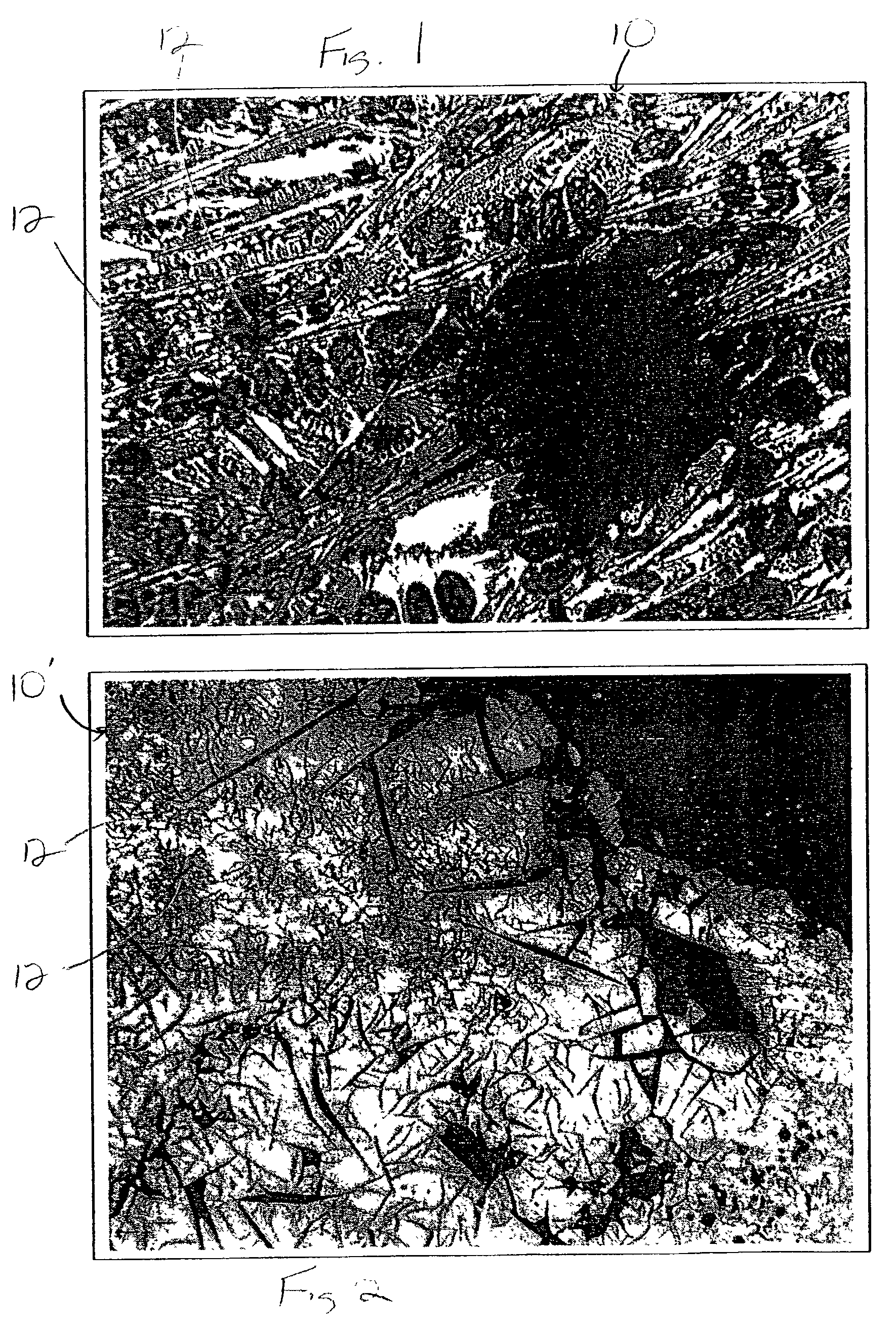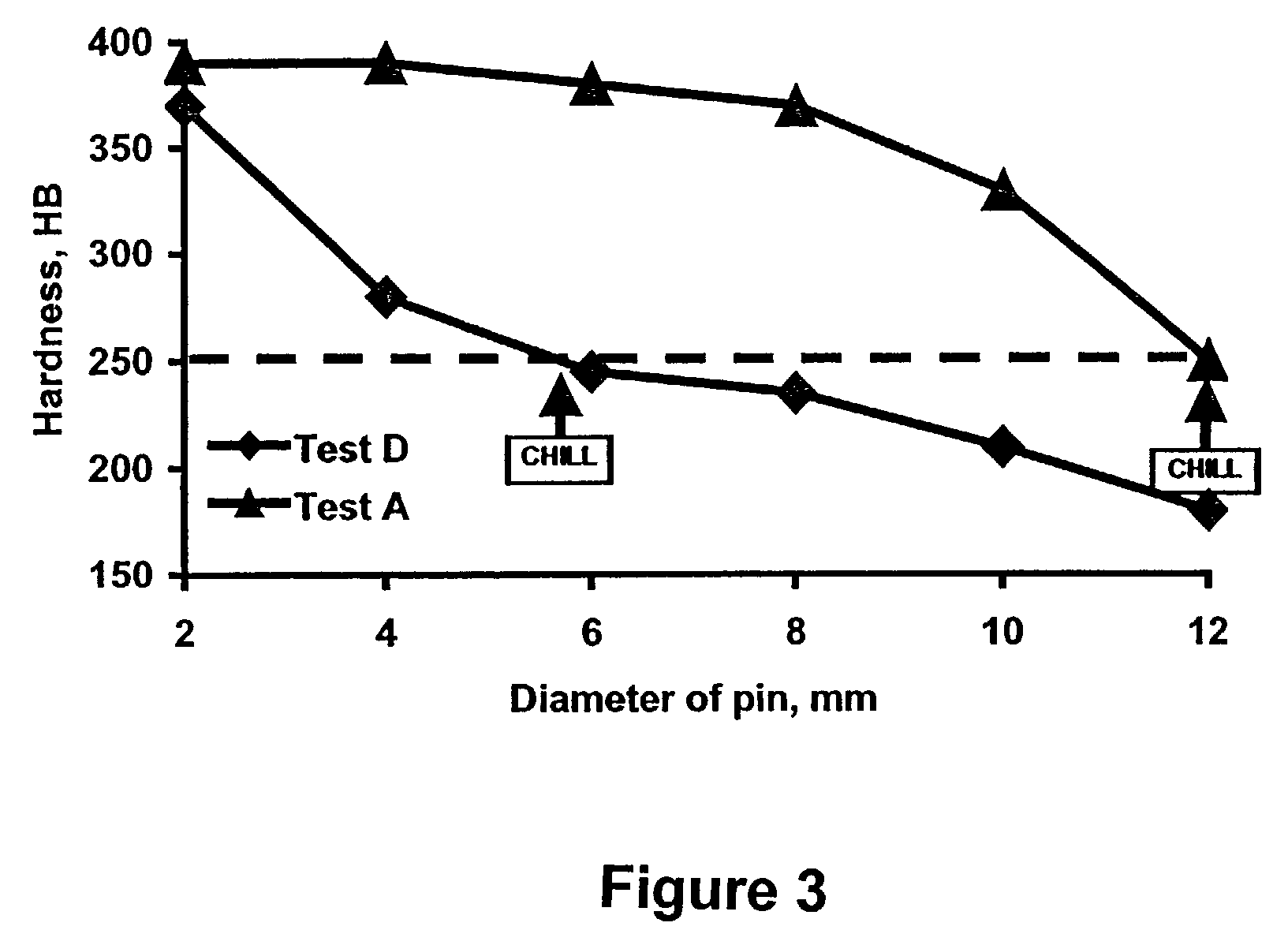Additive for inoculation of cast iron and method
a technology of additives and cast iron, which is applied in the field of additives for casting iron inoculation, can solve the problems of difficult to achieve the required microstructure, brittle carbides are nearly always present, and the effect of reducing the number of nucleation sites
- Summary
- Abstract
- Description
- Claims
- Application Information
AI Technical Summary
Benefits of technology
Problems solved by technology
Method used
Image
Examples
example 1
In this example, the additive was added to each melt in amounts of 0.02% wt. % of the melt after magnesium treatment and before inoculation by ferrosilicon. The additive contained copper oxide and copper sulfide in a ratio of 1:1 in the casting formed in Test D. Also, these oxide and sulfide components were each used separately to form the additives in Test B and Test C, and were compared along with Test D to the casting formed without the additive in Test A. The results of these experiments are shown in Table 2. Also, the effect of the additive on the hardness and chill tendency of the addition casting formed in Test D is compared with the casting formed pursuant to the conventional inoculation technique in Test A are shown in FIG. 3 for ductile iron castings with varying pin diameters.
TABLE 2Nodule graphitenumber Mm2 inMinimal thicknessin casting with thickness:TestAdditivewithout cementite, mm3 mm5 mmAwithout5.0450400BCuO4.0550480CCuS3.5570520DCuS + CuO2.5700600
As illustrated...
example 2
In this example, results of which are given in Table 3, the effectiveness of the additive was evaluated when added to the melt at different steps during the method of liquid iron treatment. The following different methods of introducing the additive into the melt were tested: 1) addition of the additive after magnesium treatment and before inoculation by ferrosilicon (Test D); 2) addition of the additive simultaneously with magnesium treatment (Test E); and
3) addition of the additive after ferrosilicon treatment (Test F).
TABLE 3MinimalNodule graphitethicknessnumber mm2 in cast-withouting with thickness:TestMethodcementite, mm3 mm5 mmDAddition after2.5700600magnesium treatmentand before inoculationEAddition simultaneously5.0460420with magnesiumtreatmentFAddition after3.7520480magnesium treatmentand inoculation
As illustrated above, the best results were obtained when the melt was treated by the addition of the additive after magnesium treatment but before inoculation according...
PUM
| Property | Measurement | Unit |
|---|---|---|
| particle size | aaaaa | aaaaa |
| particle size | aaaaa | aaaaa |
| size | aaaaa | aaaaa |
Abstract
Description
Claims
Application Information
 Login to View More
Login to View More - R&D
- Intellectual Property
- Life Sciences
- Materials
- Tech Scout
- Unparalleled Data Quality
- Higher Quality Content
- 60% Fewer Hallucinations
Browse by: Latest US Patents, China's latest patents, Technical Efficacy Thesaurus, Application Domain, Technology Topic, Popular Technical Reports.
© 2025 PatSnap. All rights reserved.Legal|Privacy policy|Modern Slavery Act Transparency Statement|Sitemap|About US| Contact US: help@patsnap.com



